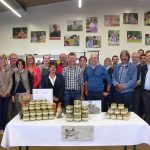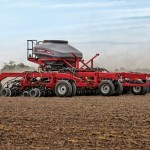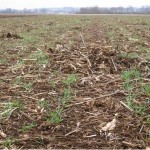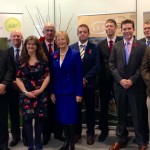 The EISA Farm Visit in the Marne-Champagne region of France was also covered in the media. Please find links to some reports here and here:
The EISA Farm Visit in the Marne-Champagne region of France was also covered in the media. Please find links to some reports here and here:
Category Archives: Spielwiese
Enhancing Biodiversity in Municipal ‘Land in Hand‘
Forum Moderne Landwirtschaft (FML e. V. – Forum Modern Agriculture) launches practical guide for shaping and maintaining ‘land in hand’
Just in time for the onset of spring, the Initiative “Innovation & Environment” of the Forum Moderne Landwirtschaft e. V. launched a practical guide for shaping and maintaining municipal ‘land in hand’ in the agricultural landscape. The new brochure offers practical tips and proposals for action which can be implemented by mayors and involved citizens to protect and enhance biodiversity… Read more
Speakers at sustainable food and farming conference call for greater diversity for more resilient farming
Greater diversity in crops, livestock, biodiversity, our markets and diets was the key message and subject of debate at the annual LEAF (Linking Environment And Farming) President’s Event on Tuesday 11th November. Read more…
S.D. well-managed soils capture carbon
 Farming sustainably and capturing carbon in soils are important topics in agriculture worldwide. Reduced tillage and no-till as means to reduce energy requirements, to reduce possible erosion hazards and to increase carbon storage in soils have thus received growing attention in the past. The article “S.D. well-managed soils capture carbon” takes a look at the situation in South Dakota, USA.
Farming sustainably and capturing carbon in soils are important topics in agriculture worldwide. Reduced tillage and no-till as means to reduce energy requirements, to reduce possible erosion hazards and to increase carbon storage in soils have thus received growing attention in the past. The article “S.D. well-managed soils capture carbon” takes a look at the situation in South Dakota, USA.
“In a study of South Dakota agricultural practices during the past 25 years, a team of 10 scientists at South Dakota State University have documented modern farming practices measurably increase the yield potential of the soil and capture carbon in the environment. Because of the practices, the result is literally a cleaner, more economically vibrant environment, the study contends. This, first-of-its-kind study was based on more than 95,000 soil samples …” Read more …
Why do we need to standardize no-tillage research?
 In Soil & Tillage Research 137 (2014) 16–22, a new article addresses the need to standardize no-till research. The publication
In Soil & Tillage Research 137 (2014) 16–22, a new article addresses the need to standardize no-till research. The publication
was contributed by R. Derpsch et al. as letter to the editor just recently.
“No-tillage is looked upon by many as a way to enable sustainable cropping intensification to meet future agricultural demands. Although no-tillage suggests merely the absence of tillage, in reality several components need to be applied to a conservation agriculture system to guarantee …” Read more …


